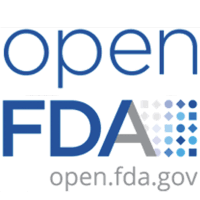Electronic Health Record (EHR)
See the following -
Fax Technology is the Cornerstone of Interoperability. Here's Why.
 Fax is the dominant information exchange technology in U.S. healthcare, outpacing secure direct messaging 25-to-1. Most of that is exchanged using inefficient and unsecure machines. With the emergence of cloud-based fax technology to facilitate secure system-to-system document transfer, the use of cloud fax needs to be part of every CTO's/CIO's digital strategy...The evolution of fax from paper-based to cloud transmission and storage - Cloud Fax Technology (CFT) - is a key step that enables providers to comply with HIPAA and other regulations. Further strengthening CFT as a key component in Healthcare Information Systems (HIS) is its evolution into Direct Messaging platforms, enabling the seamless exchange of Patient Health Information (PHI) between the diverse data and document management systems used by labs, pharmacies, doctor's offices, hospitals, and billing providers. CFT supports and contributes to the goal of interoperability...
Fax is the dominant information exchange technology in U.S. healthcare, outpacing secure direct messaging 25-to-1. Most of that is exchanged using inefficient and unsecure machines. With the emergence of cloud-based fax technology to facilitate secure system-to-system document transfer, the use of cloud fax needs to be part of every CTO's/CIO's digital strategy...The evolution of fax from paper-based to cloud transmission and storage - Cloud Fax Technology (CFT) - is a key step that enables providers to comply with HIPAA and other regulations. Further strengthening CFT as a key component in Healthcare Information Systems (HIS) is its evolution into Direct Messaging platforms, enabling the seamless exchange of Patient Health Information (PHI) between the diverse data and document management systems used by labs, pharmacies, doctor's offices, hospitals, and billing providers. CFT supports and contributes to the goal of interoperability...
- Login to post comments
FDA Issues RFQ for Large Scale EHR Study - Wants to Leverage VA's Open Source VistA EHR and Database for Research
 The Food and Drug Administration (FDA) yesterday issued a Request for Quotation (RFQ) for a large-scale electronic health record (EHR) system. This RFQ is very important as the objective is to develop a platform to support a critical project by the FDA's Division of Bioinformatics and Biostatistics (DBB) "to conduct research to assess the safety and surveillance of FDA regulated products through the FDA adverse event reporting systems..." Adverse drug reactions are one of the leading causes of death in the US, thus finding which drugs cause negative interactions is of vital importance. The project requires "use of the large electronic medical record (EMR) system..." The project is going to leverage the largest, most comprehensive, and clinically relevant medical records database, that of the US Department of Veterans Affairs (VA).
The Food and Drug Administration (FDA) yesterday issued a Request for Quotation (RFQ) for a large-scale electronic health record (EHR) system. This RFQ is very important as the objective is to develop a platform to support a critical project by the FDA's Division of Bioinformatics and Biostatistics (DBB) "to conduct research to assess the safety and surveillance of FDA regulated products through the FDA adverse event reporting systems..." Adverse drug reactions are one of the leading causes of death in the US, thus finding which drugs cause negative interactions is of vital importance. The project requires "use of the large electronic medical record (EMR) system..." The project is going to leverage the largest, most comprehensive, and clinically relevant medical records database, that of the US Department of Veterans Affairs (VA).
- The Future Is Open
- Login to post comments
Feature Overlaps Between Immunization Information Systems and EHRs
 Immunization Information Systems (IIS) have been around for nearly twenty years. Their functionality, completeness, and usefulness have all increased over this time. IIS and electronic health record (EHR) systems have always had unique features, as well as some overlapping features, and the deployment of EHRs has enhanced the local immunization capabilities of clinician practices. Several critical clinical features that are considered to be core functions of IIS are beginning to be supported by EHRs. This article will review and discuss five such critical features: online data entry, clinical decision support for immunization, reminder-recall, practice-level assessment of up-to-date status, and patient access to their immunization data.
Immunization Information Systems (IIS) have been around for nearly twenty years. Their functionality, completeness, and usefulness have all increased over this time. IIS and electronic health record (EHR) systems have always had unique features, as well as some overlapping features, and the deployment of EHRs has enhanced the local immunization capabilities of clinician practices. Several critical clinical features that are considered to be core functions of IIS are beginning to be supported by EHRs. This article will review and discuss five such critical features: online data entry, clinical decision support for immunization, reminder-recall, practice-level assessment of up-to-date status, and patient access to their immunization data.
- Login to post comments
Fed Health IT Spending: $6.5 Billion By 2016
Federal health IT spending will increase from $4.5 billion in 2011 to $6.5 billion in 2016, which represents a compound annual growth rate of 7.5%, according to a GovWin IQ research study released by Deltek.
- Login to post comments
Federal Incentive Payments For EHRs To Doctors And Hospitals Edge $24 Billion
The Centers for Medicare and Medicaid Services paid out the equivalent of the gross national product of Costa Rica -- $23.7 billion -- to hospitals and medical professionals from 2011 through April 2014 to adopt electronic health records.
- Login to post comments
Federal Prisons Seek Advanced EHR, Clinical Decision Support
The Federal Bureau of Prisons (BOP) is looking to replace its basic EHR with a more robust commercial offering, according to a request for information (RFI) posted on FedBzOpps.gov this week. The BOP is specifically looking for clinical decision support capabilities to serve its 219,000 federal inmates and more than 400 physicians at its standard prisons and advanced care facilities...
- Login to post comments
For Hospitals on the Edge, Health IT is the Tipping Point
 Without question, massive health IT expense and the predominant proprietary IT model are threats to a hospital or health system’s financial viability, to its solvency. We’re seeing some examples even now. Michigan’s Henry Ford Health System recently reported a 15 percent decrease in net income as a result of uncompensated care and $36 million spent on a proprietary EHR system. According to health system CEO Nancy Schlichting, “We knew that 2012 and 2013 would not be easy years for the system because of the Epic costs.” Read More »
Without question, massive health IT expense and the predominant proprietary IT model are threats to a hospital or health system’s financial viability, to its solvency. We’re seeing some examples even now. Michigan’s Henry Ford Health System recently reported a 15 percent decrease in net income as a result of uncompensated care and $36 million spent on a proprietary EHR system. According to health system CEO Nancy Schlichting, “We knew that 2012 and 2013 would not be easy years for the system because of the Epic costs.” Read More »
- Login to post comments
From Fitbit To The Newsfeed: Curating Patient Records In The Internet Era
...Everyone seems to think that the end game for humanity is a single database that has all care documented in it. Picture that historic perforated printer paper – only digital...
- Login to post comments
Frost & Sullivan Applauds CORAnet™'s Efforts to Strengthen its Brand in the Competitive Mobile Electronic Health Record Market
 Based on its recent analysis of the mobile electronic health record (EHR) market, Frost & Sullivan recognizes CORAnet™ with the 2017 North America Frost & Sullivan Award for Competitive Strategy Innovation and Leadership. CORAnet™ has emerged a successful, cloud-based mobile technology solution provider, offering first responders, doctors, and individual patients 24/7 secure access to personal health records (PHRs). Its advanced software makes possible real-time access to EHR data that is exchangeable along the entire care continuum. This capability is the result of its deep understanding of sophisticated EHR healthcare information technology, health information exchanges, mobile applications, HIPAA and MU3 compliance requirements.
Based on its recent analysis of the mobile electronic health record (EHR) market, Frost & Sullivan recognizes CORAnet™ with the 2017 North America Frost & Sullivan Award for Competitive Strategy Innovation and Leadership. CORAnet™ has emerged a successful, cloud-based mobile technology solution provider, offering first responders, doctors, and individual patients 24/7 secure access to personal health records (PHRs). Its advanced software makes possible real-time access to EHR data that is exchangeable along the entire care continuum. This capability is the result of its deep understanding of sophisticated EHR healthcare information technology, health information exchanges, mobile applications, HIPAA and MU3 compliance requirements.
- Login to post comments
Fueling Public HIE With Business Tools And Standards
Health information exchange technologies and business models among public health entities are in a state of flux. Yet the practice of HIE is going to be essential for public health departments to facilitate better care of individual and populations at a lower cost...
- Login to post comments
Future of Info-Exchange Standards Debated
The federal Health IT Standards Committee received an abundance of comments along with a report from a work group reviewing a set of 12 specifications for information sharing to be used in the proposed nationwide health information network, or NwHIN. Dr. Read More »
- Login to post comments
Geisinger, xG Health Solutions™ to Advance Open Health Care Application Ecosystem
Geisinger Health System and xG Health Solutions announced today they have connected a software app developed by Geisinger to an Electronic Health Record (EHR) by leveraging new draft international standards...[using] an approach developed with support from...[the] Office of the National Coordinator's Strategic Healthcare IT Advanced Research Projects (SHARPn) grant, specifically the open-source Substitutable Medical Apps, Reusable Technologies (SMArt) Platform...
- Login to post comments
Getting EHR Vendors Speaking the Same Language
So far, there is little financial incentive to support true interoperability, and if anything, many vendors see some level of proprietary distinction as desirable – creating barriers to customer defection.
- Login to post comments
Getting EHR Vendors Speaking the Same Language
When it comes to the development of truly interoperable EHRs, vendors, including myself, face a real quandary. Most EHR vendors tout an organizational mission statement focused on improving healthcare and helping patients and providers, and to the best of their ability operate accordingly. Read More »
- Login to post comments
Glasses Half Full and Empty: EHR Use Has Doubled, But...
With $3.1 billion awarded to doctors who are buying and learning how to use electronic health records (EHRs), Secretary of Health and Human Services Kathleeen Sebelius told a Kansas City community college that 41,000 doctors and 2,000 hospitals were on the road to meaningfully using the technology — double the number of EHR users in 2 years. Read More »
- Login to post comments